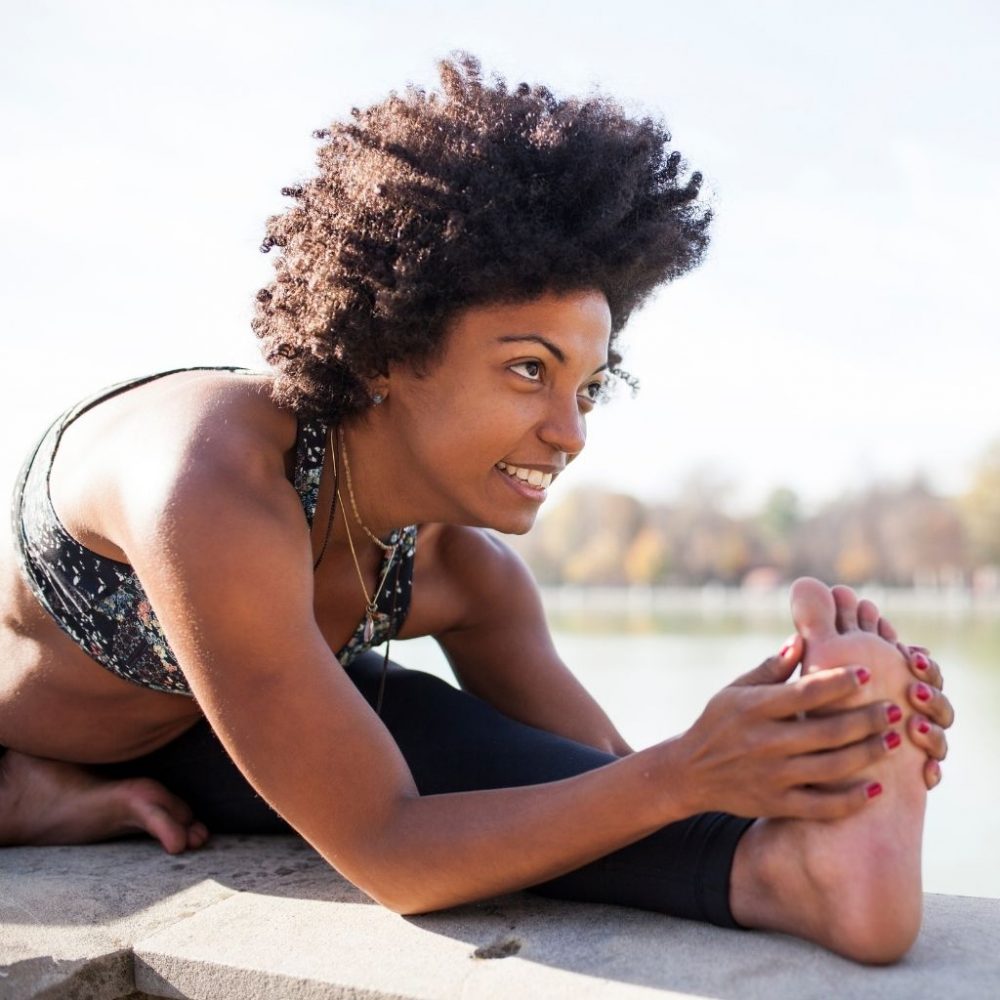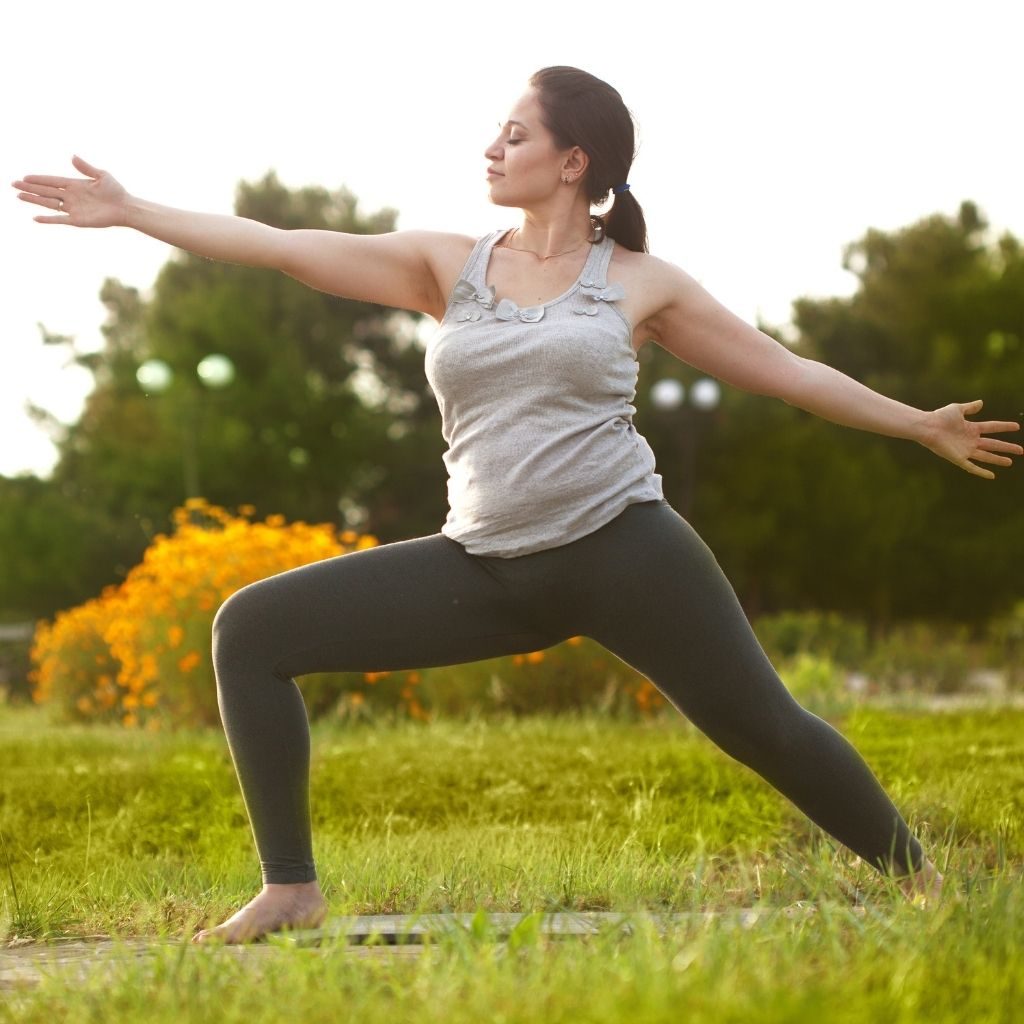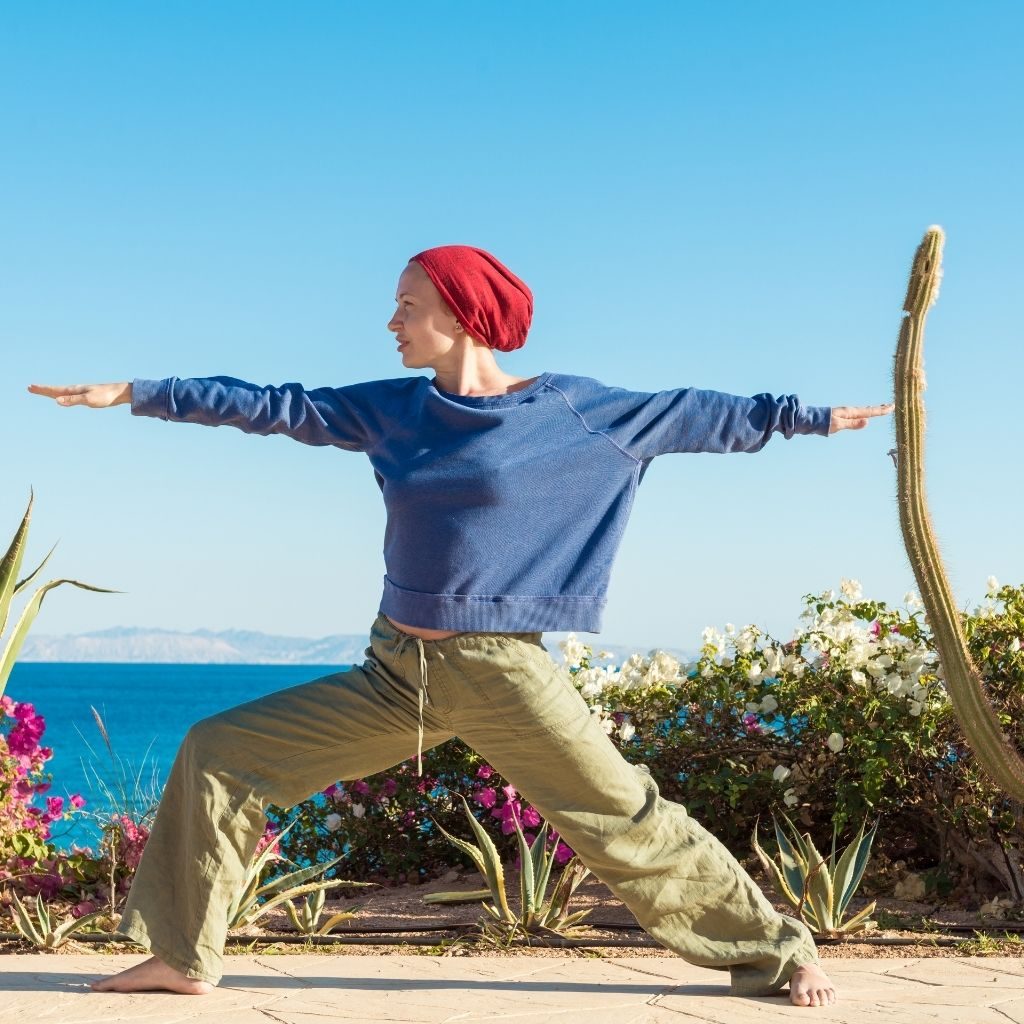How Long Does it Take to Get Good at Yoga?
While yoga is practice and patience, no one can blame you for stopping and wondering how long it can take to get good at yoga.

On average, it takes around six months of regular (3-4 times a week) practice to get good at yoga. In this time, there is improvement in flexibility, muscle development and strength, weight loss, and respiratory function. That said, how much a person benefits depends on their body type, pre-existing health conditions, and age.
Wherever you are with your practice, this article will help you in developing an understanding of how long it will take you to get good at yoga, setting realistic milestones, measuring progress, and understanding what ‘good’ really means.
The most important question first – what does it even mean to be good at yoga.
What does ‘Good’ mean? (From a yoga standpoint)
To understand what “good at yoga” really means, we can reflect on the goal of yoga as a discipline. Yoga helps us live to our fullest potential. Improving our flexibility, becoming calmer, or leading a healthier lifestyle, all amount to becoming good at yoga.
The ultimate goal of yoga is coming to a stage where we can stop the fluctuations of the mind. The closer we are to that place, the better we are at yoga.
Everything that we do in yoga, whether it is our asana practice, reading the Yoga Sutras, or sitting in meditation, is aimed to help us reach that final goal.
At the same time, we have our personal and more need-based goals from yoga, like better flexibility, a calmer state of mind, more strength, or general health and wellbeing.
Generally speaking, it can take anywhere between 6 months to 1 year of 3-4 times yoga a week to attain these goals.
Goal setting in yoga should come from a place of understanding of the self and not from a comparison with other peoples’ journeys.
It should be a personalized activity as there are so many variables – where you are starting from, where you are with your body and mind, your discipline, your age, and your lifestyle.
With that spirit of compassion for the self and without any struggle to achieve anything, let us look at some milestones that we can use to measure our progress in our yoga practice.
Wanna know more? 👉 Here How Much Does a Personal Yoga Instructor Cost? (Avg in USA, Australia, and the UK)

What happens with one month of regular yoga?
With one month of regular yoga, you can expect to lose around 5 pounds, provided your diet and lifestyle is supportive. Your muscle strength could improve where you are able to hold the more accessible poses for 8-10 breaths. Your flexibility should improve. Your breath should deepen, and you might find yourself sleeping better.
Regular yoga if you are doing yoga at least 3-4 times a week for anything between half an hour to an hour.
Let us look at these changes in detail.
Weight loss
The first month of your yoga practice might be more about learning the basics and getting used to the poses than weight loss if you are a beginner.
However, even if you are just starting and assuming that you are consuming a balanced diet, you can lose around 5 pounds in the first month.
Building strength and muscle
Even with 3-4 days of yoga in a week, it might take more than a month to see tangible changes when it comes to muscle gain.
What will be more apparent will be the feeling of being strong in the body.
In a month, you should hold the more accessible poses for 8-10 breaths.
Flexibility
If touching your toes is the reason why you want to do yoga, and you are stiff from sitting at a desk all day, in all likelihood, you will not get there in one month of practice.
Will you be able to go a few inches closer to your toes? Yes.
Regular stretching with yoga helps to relax and loosen tight muscles.
The breath
Yoga helps calm the nervous system, which has many benefits – reduced stress and anxiety, improved sleep, deeper breathing.
With one month of regular yoga, you can expect your inhales and exhales to become longer by at least a couple of counts.
You may also experience a longer and more profound sleep and notice that your mind is calmer and more relaxed.

What happens with three months of regular yoga?
With three months of regular yoga, you can expect to lose between 13 and 15 pounds of weight. You could gain muscle and feel stronger while holding poses. Your flexibility will improve, pranayama will become easier, and meditation could feel more accessible.
You can expect these changes to occur if you do yoga at least 3-4 times a week for three months.
The duration of a class could be anything between half an hour to an hour.
Here is how these changes will take place.
Weight loss
When it comes to weight loss, three months of regular yoga can make a difference to your scales.
By this time, you are holding asanas for longer in hatha yoga and doing more vigorous flows in vinyasa.
With your diet and lifestyle supporting you in this journey, you can expect to lose between 13 and 15 pounds.
Building strength and muscle
You will start to gain muscle and feel stronger.
You might be able to do poses like Bakasana or Crow pose, go deeper into downward-facing dogs, and finally enjoy warrior poses.
Flexibility
Forward folds will begin to feel more manageable.
Even if you are not there yet, you are almost there.
The breath
With mindfulness, you will be linking your breath to movement, especially in vinyasa and Sun salutations, making you feel more stable and grounded.
In three months, pranayama will improve, as you will be able to practice breathing techniques for longer and breathe more fully.
Sitting for meditation might begin to feel a lot easier.

What happens with six months of regular yoga?
With six months of regular yoga, along with losing weight, your body would feel toned and fitter. Your posture could improve and you could feel taller. You would gain muscle and poses that need arm strength would become accessible. Your flexibility should improve so forward folds will become possible. There would be a shift in how you feel physically, mentally, and emotionally.
If you have been practicing yoga regularly for six months, your body and mind are most certainly not the same.
Here are the changes you can expect to take place.
Weight loss
Other than losing weight, you could also notice a change in parts of the body that are difficult to make leaner – thighs, for instance.
Your core strength should increase, helping ease back pain and improving balance.
Building strength and muscle
While you would experience increased muscle and strength, you might notice that your yoga practice has shifted.
You should be able to hold your chaturangas (knees – chest – chin), become better at yin yoga, and feel taller.
Flexibility
Even if you started with very tight calves and hamstrings, you should be acing forward folds in six months.
The hip, inner and outer thigh, and groin should loosen up, making poses like Badhakonasana or Butterfly pose more accessible.
The breath
Your breath should become longer, deeper, and more even, not just on the mat but also off it.
By this time, you should also start seeing a shift in how you feel emotionally and mentally – your mind spacious, ready, and free, and your spirit light, connected, and grateful.
What happens with one year of regular yoga?
With one year of regular yoga, your weight will balance out. You could find that some lifestyle or psychosomatic issues and their symptoms have become better. You would be experiencing better mood, higher energy levels, and improved sleep.
One year of yoga can be physically, mentally, and spiritually transformative.
It comes with its challenges of maintaining discipline and keeping to schedule, but the rewards are worth everything you put in.
Building strength and muscle
You will likely see a lot of improvement in muscle definition and find that your body looks and feels toned.
Since muscles are heavier than fat, your weight will balance itself out by this time.
Flexibility
You will be ready for Instagram.
The breath
Since the breath is our guide to focus, meditation will begin to feel accessible and even enjoyable.
You will be experiencing much better moods and improved sleep.
Most importantly, it will become easier to find joy in the present.
Health and wellbeing
After one year of regular yoga, most people find that their psychosomatic health issues are either cured or have become easier to manage.
Some lifestyle diseases that yoga can significantly help with are blood pressure, migraines, backaches, respiratory problems, and diabetes.
Are there any other things that you should be aware of?

Essential things to keep in mind
Yoga is awareness.
Here are some things to be mindful of when building and establishing your practice.
Set an intention and fix your goals
Thinking about what you would like to achieve from your yoga practice helps set milestones and measure progress.
When you see yourself inching ahead towards your goal, it keeps you motivated when getting on the mat feels like a chore.
Setting an intention when you arrive on your mat for the day’s practice will inspire you and keep you focused mentally and spiritually.
Make sure you get adequate rest
One of the main reasons for injury in yoga is repetition and overuse of the body.
At least once a week, taking regular time off is vital for the body to heal itself.
Other times to avoid practicing are if you have any fever and for women when they are menstruating.
If there are any recent injuries, it is best to practice only under the guidance of a qualified yoga teacher.
Do you feel happier, stronger, calmer?
One way to assess if you are progressing in your practice is to think about how your practice makes you feel.
Yoga is balance.
If you do not feel more in harmony with yourself and others, perhaps something is not correct.
You could try another style of yoga or make changes to your lifestyle that support your yoga practice, sleep, and diet, for instance.
Yoga should make you feel happier, stronger, and calmer.
Yoga is non-competitive
This is perhaps the most important thing to keep in mind at all times.
Whatever your reason for doing yoga is, at the end of it, you are doing it well if you are coming closer to yourself.
Your practice will keep evolving with time and become your anchor during times of uncertainty and doubt.
You may also like 👉 Why Yoga Is Important in Modern Life
Final thoughts
Yoga does not follow an outcome-based approach. If anything, it teaches us to be kinder to ourselves.
So, while abhyasa or practice is one of the building blocks of yoga, the pressure to get to a specific place is avoidable.
Whether it takes one year or five years to get to where you want to be, commitment to self-care is the only thing that matters.
Watch Sadhguru, an Indian yogi, mystic, and founder of Isha Foundation, talk about the true purpose of yoga.
Read also:

